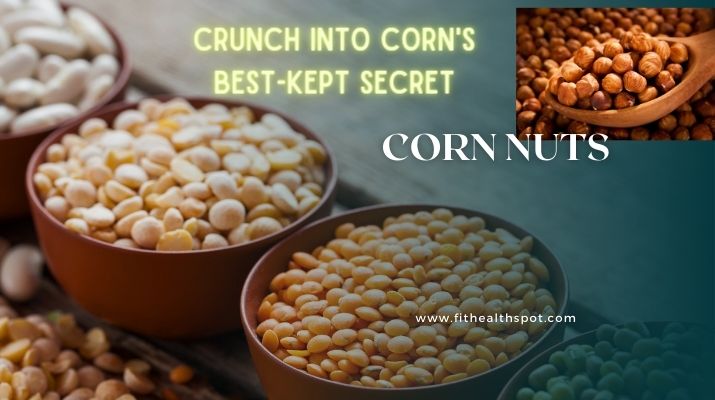Introduction
In the vast world of snacks, there emerges a contender that’s both crunchy and compelling: Corn Nuts. But what exactly are these bite-sized delights? Corn Nuts are whole corn kernels that have been roasted or deep-fried, creating a snack that boasts a uniquely robust crunch, making them an irresistible munch for many.
Their origins trace back to indigenous cultures, which initially cultivated the idea of toasting corn kernels. Today, Corn Nuts have found their way into supermarket aisles and snack bowls worldwide. A combination of their versatile flavor profiles, ranging from the smoky BBQ to the tangy ranch, and their satisfying crunch has bolstered their growing popularity. As more individuals seek out alternative snacking options that walk the line between indulgence and health, Corn Nuts stand out, prompting a broader question: Just how do they fit into the modern, health-conscious diet? This guide dives deep into the world of Corn Nuts, exploring their flavors’ nutritional merits and even offering insights into making them at home.
Join us as we unravel the crunchy enigma of Corn Nuts and discover why they’re fast becoming a favorite snack for many.
What Are Corn Nuts?
Navigating the snack aisles, you’ve likely stumbled upon a packet labeled ‘Corn Nuts’ and wondered about its contents. Are they nuts? Are they made of corn? Here’s the lowdown:
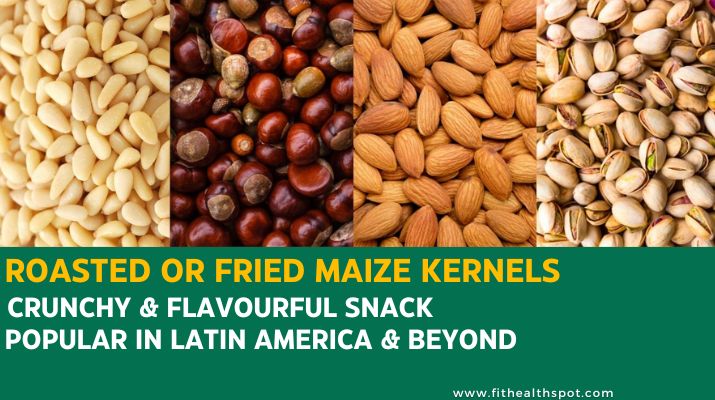
Corn Nuts are neither nuts nor your typical corn kernels from a fresh cob. Instead, they are large kernels of a special variety of corn called Cacahuazintle (ka-kah-wah-ZEEN-tleh). These kernels are soaked in water, then roasted or deep-fried to perfection, resulting in a snack that boasts a signature crunch unparalleled by most other snacks.
Tracing back to their roots, Corn Nuts are originally known as “maíz tostado” in South America, especially in countries like Peru, where they have been a beloved snack for centuries. The indigenous cultures of these regions toasted corn kernels over open flames, creating the earliest versions of what we today recognize as Corn Nuts.
For those intrigued by the nutritious potential of grains and beans, Corn Nuts share some parallels with another superfood – the Lima bean. Lima beans, like Corn Nuts, are a powerhouse of nutrients and offer a myriad of health benefits. They have been a staple in many diets across different cultures for ages. To dive deeper into the world of Lima beans and explore their health benefits, check out our detailed guide on Lima Beans Health Benefits.
As we delve further into our exploration of Corn Nuts, you’ll find that these crunchy delights are more than just a snack; they’re a testament to centuries of culinary ingenuity and a modern-day favorite for those seeking a unique munching experience.
Delving into Flavors: Popular Corn Nuts Varieties
When it comes to Corn Nuts, it isn’t just the crunch that’s won over countless snack enthusiasts; it’s also the myriad of flavors they come in. Let’s explore some of the most popular variants and what makes each of them unique:
Ranch Corn Nuts

Often, when you hear the term ‘ranch,’ a creamy, tangy, herb-filled dressing comes to mind. That very profile has been captured and condensed onto Corn Nuts, resulting in the Ranch Corn Nuts flavor. This variant offers a zest of herbs and a tangy kick, making it an incredibly popular choice among those who fancy a burst of flavor with every bite. Given its appeal, it’s no surprise that the ranch flavor stands as one of the top-selling Corn Nuts variants.
Tajin Corn Nuts
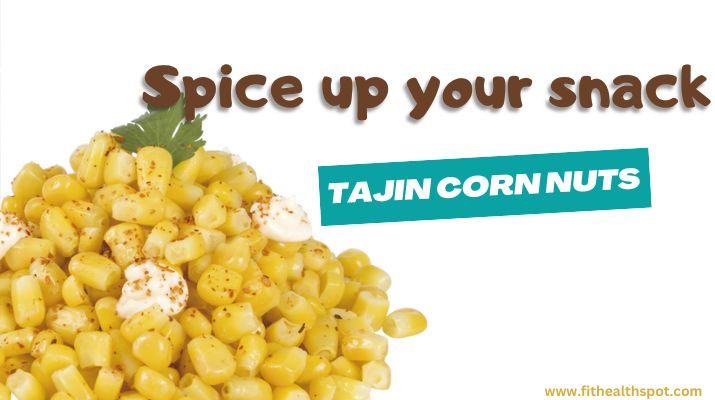
Tajin seasoning is a symphony of chili peppers, lime, and sea salt. Originating from Mexico, this seasoning adds a vibrant zest to fruits, vegetables, and, yes, Corn Nuts. The Tajin Corn Nuts offers a balanced play of spicy, tangy, and salty flavors, giving snackers a taste that’s both refreshing and addictive. It’s the kind of flavor that makes you reach for just “one more” over and over.
BBQ Corn Nuts
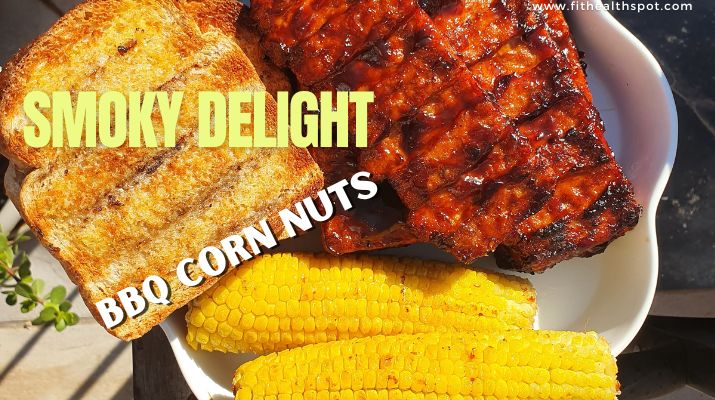
The BBQ flavor is universally loved, and when combined with the satisfying crunch of Corn Nuts, it’s nothing short of a culinary delight. These Corn Nuts offer a deep, smoky taste reminiscent of a summer barbecue. The flavors of charred wood, caramelized sugars, and savory spices dance on the palate, resonating deeply with those who love the essence of grilled foods. If you’re someone who’s enamored by smoky flavors, you might also appreciate the art of smoked salmon. Dive into our Smoked Salmon Guide to unravel the nuances of this delicacy.
Peruvian Corn Nuts
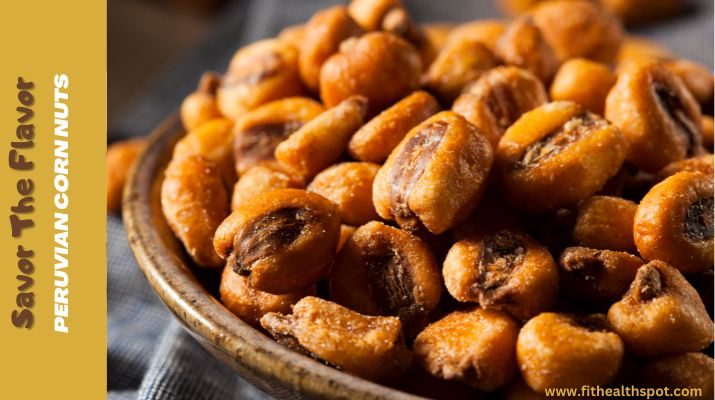
As we journey further south, we arrive at the birthplace of Corn Nuts: Peru. Known locally as ‘Cancha,’ Peruvian Corn Nuts differ slightly from their international counterparts. They’re traditionally toasted rather than deep-fried, offering a lighter crunch. Additionally, they’re often larger and have a more pronounced corn flavor, making them a favorite among purists who appreciate the snack’s cultural roots.
With such a rich array of flavors, Corn Nuts cater to a vast spectrum of palates, ensuring there’s a variant for everyone. Whether you’re seeking something tangy, spicy, smoky, or traditional, these delightful kernels promise to deliver.
The Health Aspect: Are Corn Nuts Healthy?
When it comes to snacking, most of us look for options that satiate our taste buds without compromising our health. Given their delightful crunch and tempting flavors, the question arises: How do Corn Nuts fare on the health scale?
Nutritional Breakdown
Corn Nuts Nutrition
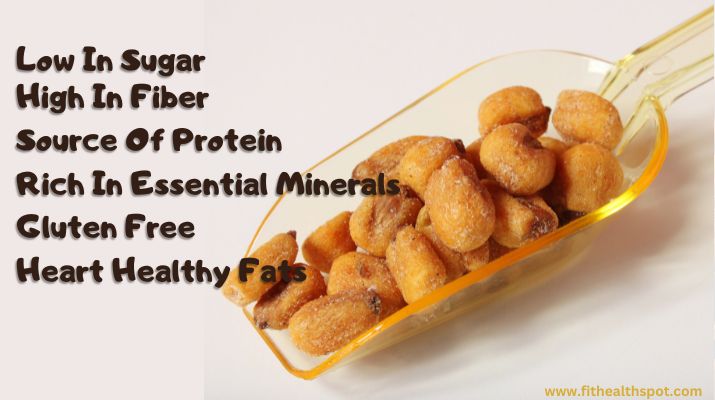
Per standard serving size (28g):
- 130
- Protein: 2g
- Total Fats: 7g
- Saturated Fat: 1g
- Trans Fat: 0g
- Carbohydrates: 15g
- Dietary Fiber: 1g
- Sugars: 0g
- Sodium: 190mg
While Corn Nuts provide a moderate amount of protein and dietary fiber, they are relatively high in fats and sodium, primarily if consumed in large quantities. As with many snacks, moderation is key.
Are Corn Nuts Gluten Free?
Good news for those adhering to a gluten-free diet: Corn Nuts are naturally gluten-free. They’re made from corn, which doesn’t contain gluten, making them a suitable snack option for individuals with celiac disease or gluten sensitivity. If you’re searching for more gluten-free options to incorporate into your diet, you might consider using Buckwheat Flour. Despite its name, buckwheat is entirely gluten-free and can be a great alternative for various recipes.
How They Compare to Other Snacks
Pros:
- Corn Nuts are typically made from whole corn kernels with minimal added ingredients.
- Gluten-Free: A great option for those avoiding gluten in their diets.
- Versatility: Their array of flavors ensures there’s a variant for every palate.
Cons:
- They can be high in calories if consumed in large quantities.
- Sodium Content: Some flavors might contain a higher amount of sodium, which could be concerning for those monitoring their salt intake.
When contrasting Corn Nuts with other snacks, it’s essential to weigh the pros and cons. For instance, if we look at another nutritious snack like green olives, we find a food rich in healthy fats, low in carbohydrates, and packed with antioxidants. For a comprehensive look into the world of olives and their benefits, explore our guide on Green Olives and Varieties Benefits.
In summary, although Corn Nuts can contribute to a balanced diet when enjoyed in moderation, it’s advantageous to vary your snack choices and monitor portion sizes for the sake of overall well-being.
How Are Corn Nuts Made? DIY and Commercial Production
Whether you’re munching on them during a movie night or adding them as a crunchy element to a salad, Corn Nuts offer a unique texture and taste. But have you ever wondered how these crispy kernels come to be? Let’s embark on a journey from large-scale production lines to the cozy ambiance of your kitchen.
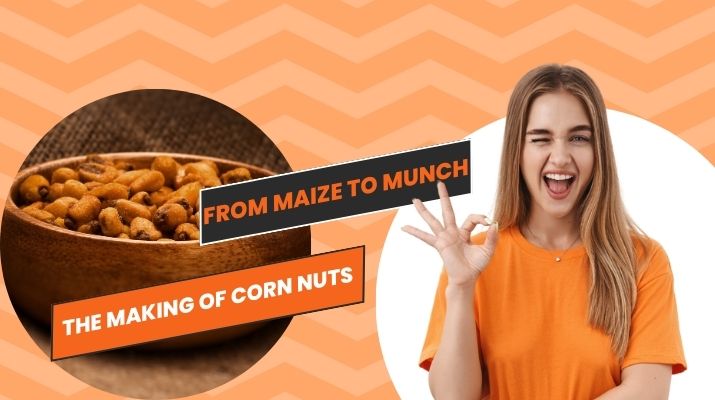
Commercial Production
- Corn Nuts begin their journey as a variety of maize, specifically grown for its larger kernels. Here’s a brief overview of the commercial production process:
- Soaking: The corn kernels are soaked in water, which allows them to hydrate and prepare for the cooking process.
- Roasting or Frying: Once thoroughly soaked, these kernels are either roasted or deep-fried. The method chosen largely determines the texture and taste of the final product. Roasting offers a lighter crunch, while frying gives a more profound, crispier bite.
- Seasoning: Post-cooking, the Corn Nuts are seasoned. This is when they get dressed in the tantalizing flavors of ranch, BBQ, Tajin, and more.
- Packaging: Once seasoned, the Corn Nuts are cooled, packed, and sealed in airtight bags, ready to be shipped to snack aisles near you.
DIY: How to Make Corn Nuts at Home
For the kitchen enthusiasts looking to try their hand at homemade Corn Nuts, here’s a simple recipe:
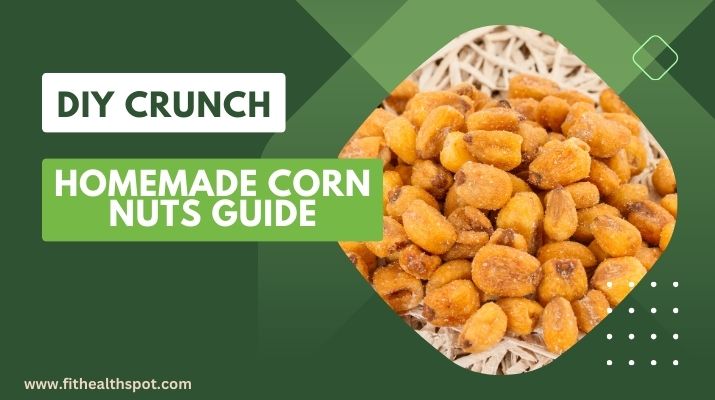
Ingredients:
- Water (for soaking)
- Cooking oil (for frying)
- Seasonings of choice (e.g., salt, chili powder, ranch seasoning)
Steps:
- Place the corn kernels in a large bowl and cover with water. Let them soak overnight or at least 12 hours.
- Draining: Once soaked, drain the kernels and pat them dry with a paper towel.
- Frying: In a deep frying pan, heat the oil. Once hot, carefully add the corn kernels in batches. Fry until they’re golden brown and crunchy. This could take about 4-5 minutes.
- Seasoning: Remove the Corn Nuts from the oil and place them on a paper towel to drain any excess oil. While they’re still hot, sprinkle your choice of seasoning and toss to coat evenly.
- Cooling: Allow the Corn Nuts to cool before storing or munching!
Crafting recipes at home not only allows you to customize flavors but also gives a sense of achievement. If you found joy in this DIY, and you’re keen to explore another delightful kitchen project, why not try your hand at pasta? Dive into our guide on Cavatappi Pasta Health Benefits & Recipes for another culinary adventure.
Corn Nuts, whether industrially produced or homemade, are a testament to the wonders of simple ingredients and culinary techniques. Their crispiness, combined with a world of flavors, makes them a beloved snack across the globe.
A Close Look: What Are Corn Nuts Made Of?
In a society where people are becoming more aware of their dietary decisions, knowing the ingredients in popular snacks such as Corn Nuts can be a game-changer. At first glance, Corn Nuts might seem like just another roasted or fried corn snack, but what exactly goes into them? Let’s unravel the ingredients.
Main Ingredient: Corn Kernels
The star of the show, corn kernels are the primary component of Corn Nuts. A special variety of maize, often referred to as Cacahuazintle or giant white corn, is cultivated for its larger, starchier kernels. This variety is particularly chosen for its ability to puff up and attain that distinct crunchiness Corn Nuts are known for when roasted or fried.
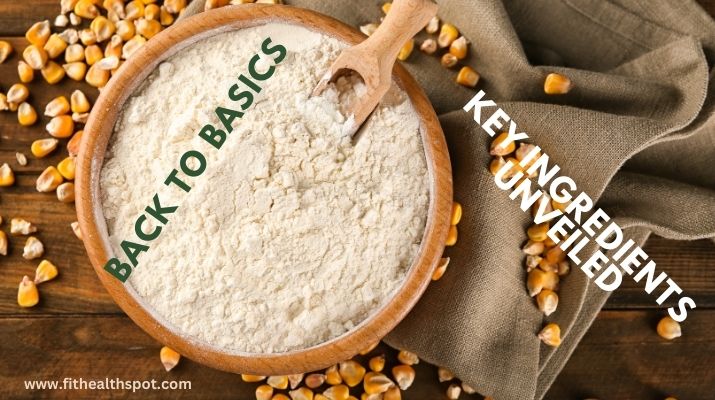
Oil:
Whether they’re roasted or deep-fried, oil plays a pivotal role in achieving the characteristic crunch of Corn Nuts. Different brands might use varying types of oil, such as vegetable, sunflower, or canola oil. The choice of oil can influence not just the flavor but also the nutritional profile of the Corn Nuts.
Seasonings and Flavorings:
This is where the diversity comes in. Depending on the flavor variant, Corn Nuts may contain:
- Flavor enhancers: Like monosodium glutamate (MSG) for some varieties.
- Natural and artificial flavorings: These give Corn Nuts their distinct taste profiles like ranch, BBQ, and Tajin.
- Spices and herbs like onion powder, garlic powder, chili powder, and others.
Additives:
Commercially-produced Corn Nuts may also contain additives to improve their shelf life, texture, or appearance. Some common additives include:
- To maintain freshness over a more extended period.
- Anti-caking agents: Prevents seasonings and flavorings from clumping.
- Coloring agents: Might be used to enhance or standardize the color across batches.
Consuming Corn Nuts in Your Diet
Corn Nuts, with their tantalizing flavors and signature crunch, have won the hearts of many snack enthusiasts. But like with most treats, the question arises: how often and in what manner should one incorporate Corn Nuts into their diet? Let’s navigate this culinary quandary.
Moderation is Key
The alluring crunch of Corn Nuts is undeniable, but it’s crucial to strike a balance between pleasure and health. Here are a few advantages and disadvantages to take into account:
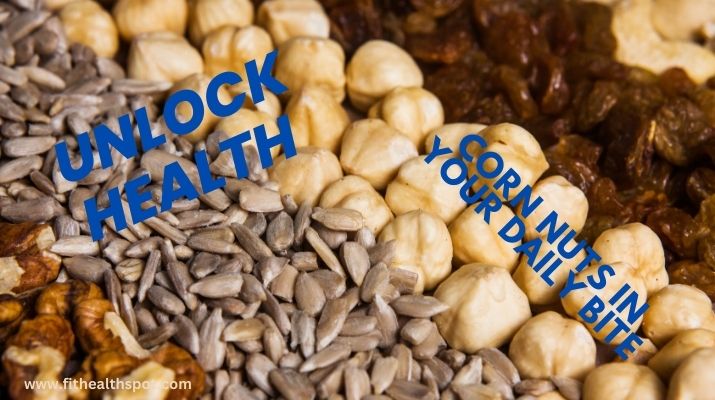
Pros:
- Nutrient-rich: Corn, in its essence, provides valuable nutrients like fiber, vitamins, and minerals.
- Energy Booster: Being carbohydrate-rich, Corn Nuts can offer a quick energy boost, making them a suitable pick-me-up during mid-afternoon slumps.
Cons:
- Caloric Density: Due to the frying process and added seasonings, Corn Nuts can be relatively high in calories. Overconsumption might not align with weight management goals.
- Sodium Levels: Some Corn Nuts variants, especially those with intense flavor profiles, can contain high levels of salt, which might not be ideal for those monitoring their sodium intake.
Recommendation: Enjoy Corn Nuts as an occasional treat rather than a daily snack. Their distinctive taste and texture can be a delightful change of pace in your snacking routine, but remember, moderation is paramount.
Pairing with Beverages
A well-chosen beverage often elevates a good snack. For Corn Nuts, a refreshing and health-conscious choice would be green tea.
Green Tea: With its subtle flavor profile, green tea can counterbalance the robust taste of Corn Nuts, providing a harmonious snack experience. Additionally, green tea is lauded for its plethora of health benefits, including antioxidant properties and potential metabolic boosts.
For those keen to delve deeper into the world of green tea, our guide on Green Tea Shots Benefits & Secrets provides an insightful journey into this ancient beverage’s history, preparation, and health benefits. Pairing Corn Nuts with a cup of green tea might just be the ideal combination of flavor, crunch, and health.
The Bigger Picture: Corn Nuts in a Healthy Lifestyle
Corn Nuts, while enticing, represent just a small fraction of the vast mosaic of dietary options available to us. As we revel in the crispness of these kernels, it’s imperative to remember the broader landscape of a balanced diet and holistic health.
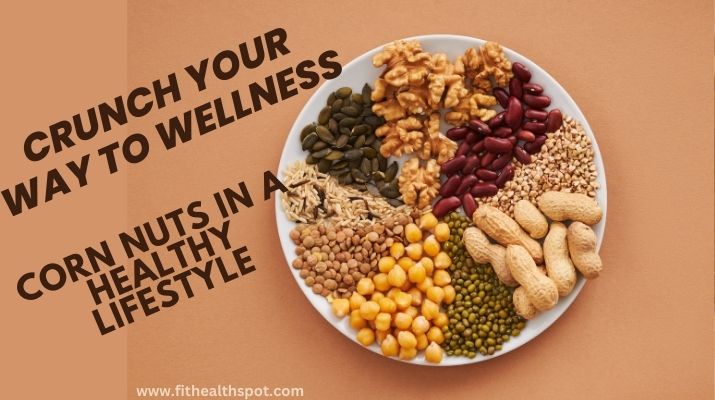
Variety is the Spice of Life:
Relying solely on one snack, no matter how nutritious can deprive us of the diverse range of nutrients that different foods offer. Consuming a diverse range of foods guarantees that we receive a mix of vitamins, minerals, and other crucial compounds. While Corn Nuts can serve as a delightful snack now and then, complementing them with fruits, vegetables, whole grains, and proteins brings more balance and nutrition to our plates.
Beyond Snacking:
For those who are journeying on a path of weight management or better health, it’s essential to look beyond just dietary choices. Holistic approaches, such as intermittent fasting or exploring non-surgical weight loss solutions, can provide structured and effective pathways.
- This practice revolves around eating within specific windows of time and has been linked with potential benefits like improved metabolism and cognitive function. Discover more about the intricacies of this approach in our guide on Intermittent and Dry Fasting.
- Non-Surgical Weight Loss Procedures: For some, dietary changes might not suffice. In such cases, exploring non-invasive weight loss treatments can be the key. Learn about the variety of options and their benefits in our piece on Non-Surgical Weight Loss Procedures.
Conclusion
From their rich cultural origins to the symphony of flavors they offer, Corn Nuts stand out as a unique and memorable snack option. We’ve journeyed through their history, delved into their flavors, and evaluated their place in a health-conscious diet. Their versatility, combined with their undeniable crunch, makes them a snack worth exploring.
But as with any food journey, the underlying message remains consistent: balance and moderation. Whether you’re eager to try making your Corn Nuts, exploring healthier snack alternatives, or diving deep into comprehensive health strategies, remember to savor each experience while prioritizing your health and well-being.
Frequently Asked Questions (FAQs)
What exactly are Corn Nuts?
Corn Nuts are roasted or deep-fried corn kernels, which offer a crunchy texture and can be seasoned with various flavors, making them a popular snack.
Are Corn Nuts gluten-free?
Yes, Corn Nuts by themselves are gluten-free, but it’s crucial to check product labels, as seasonings or additives might contain gluten or be cross-contaminated.
How do Corn Nuts differ from popcorn?
While both originate from corn, Corn Nuts are made from whole corn kernels that are roasted or fried, resulting in a harder and crunchier texture. Popcorn is made from kernels that pop when heated, producing a softer and fluffier snack.
Can I make Corn Nuts at home?
Absolutely! Making Corn Nuts at home involves soaking corn kernels, drying them, and then frying or roasting them until they achieve the desired crunchiness. Homemade versions also allow for custom flavorings.
Are Corn Nuts considered a healthy snack?
Corn Nuts can be part of a balanced diet when consumed in moderation. While they provide certain nutrients from corn, they can also be high in calories and sodium, especially when heavily seasoned. It’s always best to consume them as an occasional treat and not a daily snack.

